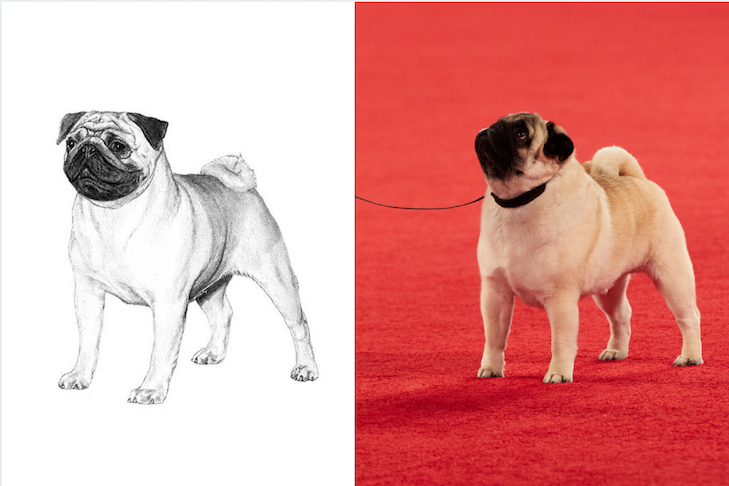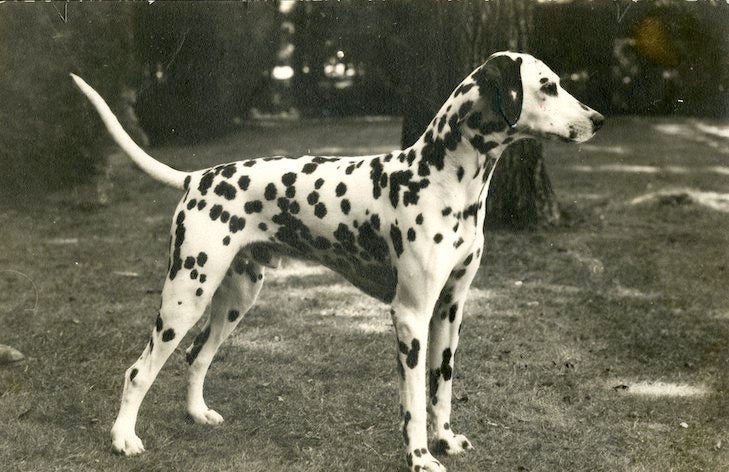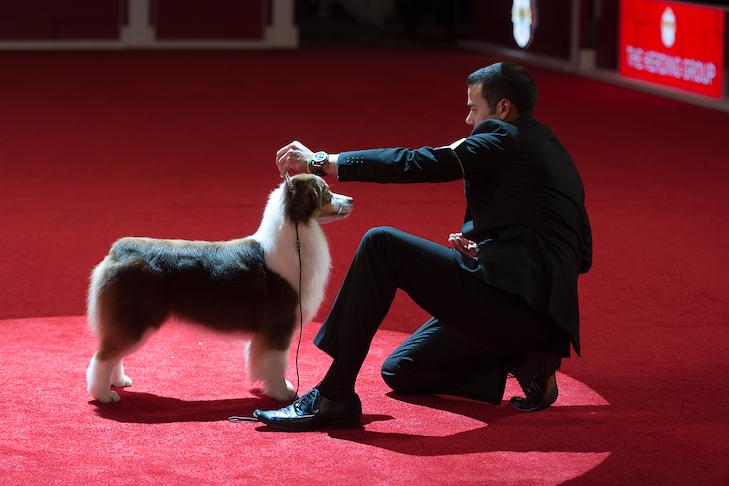About, 2,400 years before the founding of the AKC, Plato invented the dog show. Well, not really, but kind of. The great philosopher theorized that all things around us in the natural world—the chair I’m sitting in, the keyboard I’m typing on—are but imperfect versions of the ideal representations of these objects that dwell in a higher realm of consciousness. These are generally known as “Platonic forms,” and it was the master’s opinion that only by contemplating these models of perfection could genuine knowledge be gained.
In a way, Plato was describing breed standards. Knowledge of any purebred dog, ring champion, or pet, begins with its standard, a written description of the ideal specimen of a breed. Standards describe perfect type, structure, gait, and temperament of the breed — the characteristics that allow the breed to perform the function for which it was bred.
Rarely does a dog measure up to every specification of its breed standard. Indeed, the standard is a conceptualization—much like the Platonic forms—that guides the imaginations of those seriously interested in the breeding, exhibition, and performance of purebred dogs.

Who Creates Breed Standards?
The official standard for each breed, and any revision thereof, originates with an AKC parent club, the national organization devoted to a particular breed. Parent-club members vote on the standard or revision, then the club submits it to the AKC Board of Directors for approval. Once approved, a standard becomes both the breeder’s “blueprint” and the instrument used by dog-show judges to evaluate the breeder’s work.
“It’s not how cute a dog is that determines its quality—it’s how closely he conforms to his breed standard,” German Pinscher breeder Dr. Laura Van Horn says. “Frequently, there is inconsistency in the amount of detail used to describe a particular characteristic or in the wording used for particular characteristics. As a result, standards can be interpreted subjectively and judging decisions may be influenced by an individual judge’s preferences.”
Standard Deviations
A parent club may use as many or as few words as deemed necessary to express the ideal dog. The Pyrenean Shepherd standard, at 1,943 words, is a “Moby-Dick” of breed standards; in contrast, the 226-word Greyhound standard is a veritable haiku, leaving lots of room for interpretation.
The number of words a standard devotes to each aspect of a breed is a reliable hint of what is considered essential to breed type. It’s no surprise, then, that more than a third of the Neapolitan Mastiff standard is taken up by a discussion of the breed’s massive head, described in the standard as “astounding.”

More important than the sheer number of words in a standard is the choice of words used. “The use of qualifying words—which occurs in almost all standards—leaves a wide latitude and is one of the reasons for the many differences of opinion as to what is ideal in any breed,” all-breed judge Dorothy Macdonald says. “Remember, if there were complete unanimity we would not need judges—the computer could mail home the ribbons.”
Some standards include a numeric point scale, attaching the most points to what fanciers consider vital to a breed’s essence. The Dalmatian standard, for instance, assigns 25 out of 100 points to “color and markings,” and the distinctive ridge that gives the Rhodesian Ridgeback its name is worth a full 20 points.
Many, but not all, standards provide a list of imperfections so serious as to automatically disqualify a dog in the ring. Such disqualifications (“DQs,” as fanciers say) are yet another good way to determine what is considered crucial to breed type. The Great Dane standard disqualifies specimens “under minimum height”—what’s a Dane after all, if not big? But all breed standards, no matter the idiosyncrasies that make them unique, are word pictures depicting the perfect dog.
Bullmastiff breeder-judge Helene Nietsch says, how a breeder or judge interprets those words is crucial: “It takes both the left and right sides of the brain to put everything together. The right side is the creative side, the artistic side that sees the beauty, the symmetry, and the nuances of the breed. The left side interprets the standard in a more intellectual, logical way.” The breeding of dogs is both an art and a science. Serious fanciers must think with both sides of the brain to produce dogs of beauty and functionality. A well-written breed standard makes it possible.

Why Are Breed Standards Important?
AKC Conformation has existed for hundreds of years and was started as a way to evaluate breeding stock. Dogs are not being compared to each other; they’re being measured by how closely they conform to the standard of their particular breed. Why? Because the closer a dog’s appearance is to the breed’s standard, the better that dog’s ability will be to produce healthy, purpose-bred puppies that meet the standard.
It’s also the reason why mixed breeds and spayed or neutered purebreds are ineligible to compete in conformation. Responsible breeders breed dogs who have titles confirming that they adhere to the breed standard and/or are able to perform the duties for which they have been bred.

